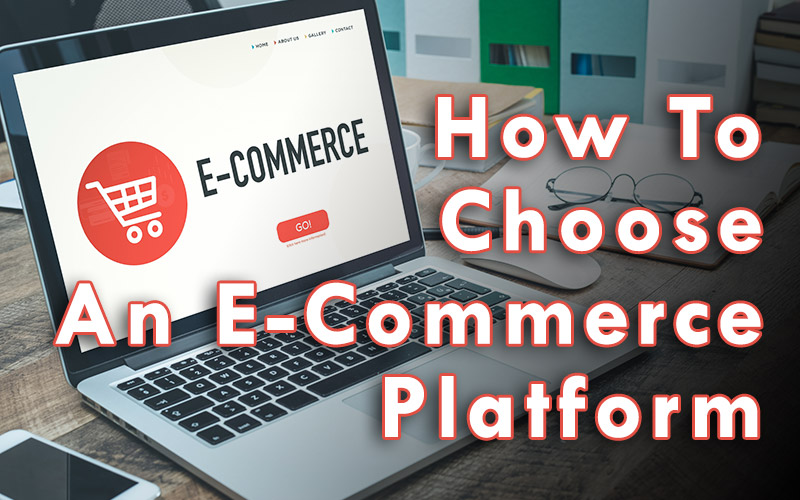
And with plenty of promising platforms to choose from, it doesn’t seem like an easy choice to make — particularly since there’s no ideal platform that works best for everyone. What’s right for you will depend on your specific interests, requirements, and circumstances.
Without context, then, I can’t tell you which ecommerce platform is the best for your store — but I can tell you how to make a smart choice. Here’s what you need to do:
Investigate the stores that inspire you
Whether you’re an aspiring seller, or you’re looking to move your current site to a new platform (perhaps it needs a redesign), you’ll no doubt have sources of inspiration: businesses that have achieved what you want to achieve, and give you a benchmark to strive for. So why not take a look at the platforms those businesses are using?
It’s often as simple as running a store URL through a CMS checker, but if the system can’t detect the CMS being used, you can always send the retailer an email to ask about it. There won’t be much of a reason for them to lie about it, and if they’re willing to answer your questions, you can find out why they chose they system they use. The reasons might be applicable to your situation.
Prioritize convenience or power
In a broad sense, every ecommerce platform leans slightly towards one of these two things, regardless of its overall level of functionality or usability. The more convenient a system becomes — moving to the cloud, offering a crystal-clear UI, providing automation options — the less powerful and flexible it becomes. On the other side of the coin, software that makes power the top priority will invariably be harder to use, and massively harder to master.
Consequently, it’s useful to decide which of these things means more to you. Do you want a convenient platform that saves you time, money, and effort, but wouldn’t easily stretch to allow you in-depth long-term customization? Or would you prefer a system you could fully adapt to suit your preferences, but might have a lot of difficulty getting under control? I contend that the typical seller is better off with a convenient platform, but it’s your choice.
Consider what level of support you’ll need
Even if your long-term goal involves working as a sole trader, you’ll not going to be selling in a vacuum. Not only are you going to need to negotiate with suppliers and deal with customers, but you’re also going to find semi-frequent cause to seek support with your ecommerce system (due to system failures, bugs, or the desire to know how to use specific features or functions).
What type of support you’ll be able to get will depend on the platform you’re using. Some platforms don’t offer any official support (or provide only minimal assistance), while others focus intensely on providing excellent support and using it as a main selling point. With a security service, your eCommerce will be safe from hacks and virus threats.
A great example of this difference in approach is the disparity between WooCommerce and Shopify: the latter cites its widely-praised 24/7 support as one of some key differences between the two, while the former is more about frugality and community-provided support (a formidable option for the most popular ecommerce plugin for the world’s most popular CMS).
Read varying reviews from similar sellers
It’s always important to read software reviews, because many elements of user experience are subjective. For instance, an interface that works perfectly for you might seem barely unusable for someone else. But when you go through reviews for ecommerce platforms, there are a couple of things you should keep in mind:
- Firstly, you should look out for reviews from people in a situation similar to yours: those who sell similar products, target similar markets, have similar styles, etc. This is because an effusive review from someone with a totally different business might sway you into expecting great things, only to find that it’s not suitable in your
- Secondly, you should look for all types of review: positive, negative, and everything in-between. Every platform has its flaws, and you should know what they are before you commit — and if you can’t find any notable negatives, it’s a sign that the reviews are being curated and you shouldn’t trust any of them.
Having been through plenty of CMS reviews, there’s only one big step remaining… and it happens to be the most important of them all:
Take advantage of trials
Knowing that it’s all but impossible to make an informed choice about using a particular piece of software, particularly when committing to it means using it as the foundation of your entire store for the foreseeable future, ecommerce platform providers invariably offer free trials of their paid services — 30 days being the standard.
Can you test everything in those 30 days? No, of course not — and it’ll be time-consuming to test several platforms. But think about how the choice you make now is going to affect your business for years to come. Doesn’t it justify a month of testing? By the end of it, you’ll likely know exactly which platform you want to use, and be able to proceed with confidence.
There’s no ecommerce platform that’s best for everyone, but if you follow these steps, you should end up with a clear choice — whether it’s a convenient cloud solution like Shopify or Wix, or a hyper-powerful self-hosted option like Magento Open Source. Make a good choice today, and you’ll set your business up for greater success in the future.
